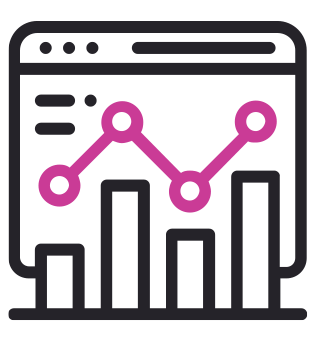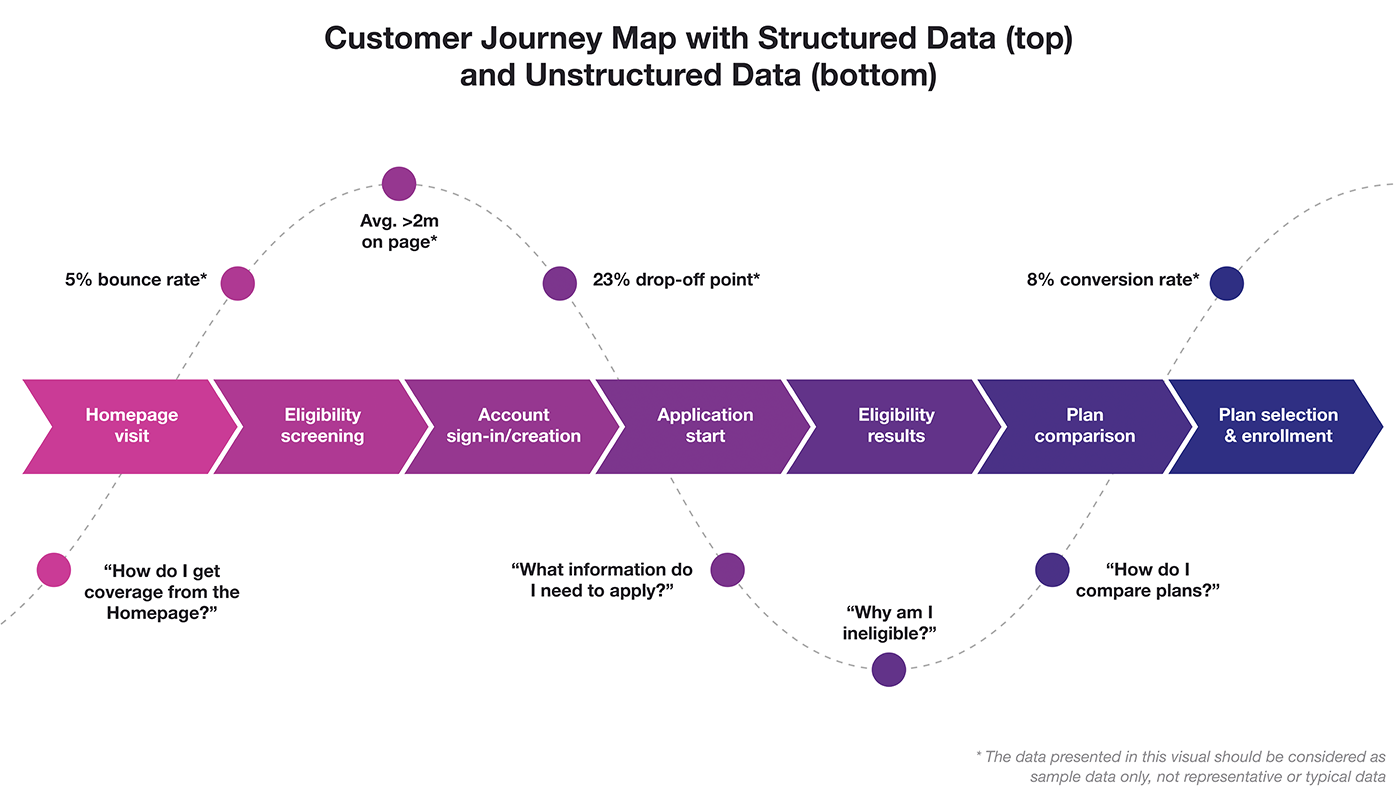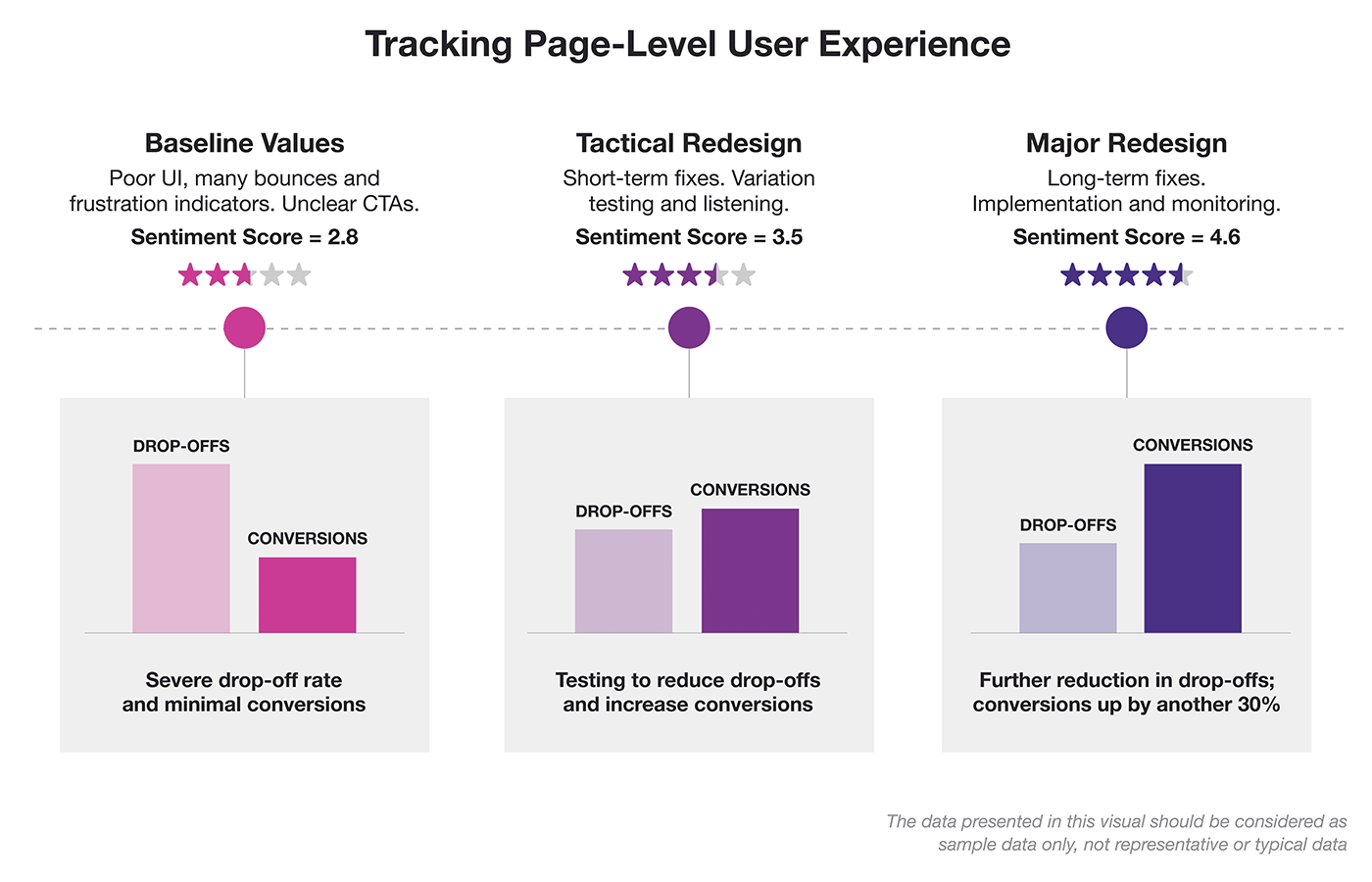Rethinking Data Analysis for Modern Decision-Making
In today’s fast-paced consulting landscape, combining quantitative and qualitative data is becoming essential to understand customer behavior and optimize business processes. This mixed methods approach offers organizations both statistical insights and human motivations—delivering a full-picture analysis that drives smarter insights and more impactful outcomes.
Quantitative data reveals what users do. It tracks interactions, behaviors, and trends through platforms like Adobe Analytics or Google Analytics. In contrast, qualitative data explains why users behave a certain way by uncovering experiences and sentiments via open-ended surveys, interviews, or social media listening.
Combining quantitative and qualitative data—a hallmark of holistic data analysis—produces deeper, more actionable insights.
Used alone, each method leaves gaps. Mixed methods research/analysis bridges those gaps by integrating both approaches, offering a more reliable, nuanced understanding of behavior and intent. For organizations looking to improve customer experience and drive performance, this convergence is a must.

How Quantitative Data Drives Scale and Precision
Quantitative data plays a vital role in identifying patterns at scale and making data-driven decisions. Its strengths include:
- Statistical rigor: Enables techniques like regression analysis, hypothesis testing, and correlation studies.
- Predictive modeling: Helps forecast customer behavior, churn prediction, or conversion likelihood.
- Actionable insights: Metrics like user flows, click-through rates, and conversion paths guide optimizations.
- Benchmarking: Allows comparison against industry standards or competitors.
- Data-driven decision making: Offers concrete evidence, reducing reliance on assumptions.
However, while quantitative data is measurable and scalable, it often lacks context—making it harder to understand the motivations behind behaviors.

How Qualitative Research Fuels CX Insights
Qualitative data, often derived from interviews, open-ended responses, or focus groups, provides valuable context and emotional insight:
- Richness and depth: Uncovers motivations, frustrations, and experiences driving user behavior.
- Contextual understanding: Sheds light on situational or environmental factors.
- Emergent themes: Detects recurring topics or pain points often missed by numerical data.
- User-centric insights: Highlights unmet needs and voice of the customer (VOC) feedback.
Despite its strengths, qualitative data typically involves smaller sample sizes and is more interpretive, making it harder to generalize.

Better Together: Merging Quantitative and Qualitative Data Analysis
Combining quantitative and qualitative data—a hallmark of holistic data analysis—produces deeper, more actionable insights. Mixed methods research enables triangulation, increasing both reliability and insight quality. Three common integration models include:
- Convergent parallel design: Collects both data types simultaneously, then merges them. For example, analyzing site traffic alongside interviews to understand both behavior and motivation.
- Explanatory sequential design: Gathers quantitative data first, followed by qualitative data to explain it. A dip in engagement might trigger follow-up user interviews.
- Exploratory sequential design: Begins with qualitative input to inform subsequent quantitative testing, like using focus group feedback to guide A/B testing.

Advantages of Mixed Methods Research & Analysis:
- Enhanced validity: Triangulation confirms findings across sources.
- Nuanced insights: Blends broad trends with context-rich details.
- Actionable strategies: Aligns customer behavior prediction with real-world user sentiment.
Inside the BlastX Approach to Mixed Method Analysis
At BlastX Consulting, we specialize in merging quantitative and qualitative data to generate full-picture insights. Our approach:
- Data collection: We gather behavioral data (e.g., session analytics, conversion funnels) alongside qualitative inputs like customer feedback analysis or emotion detection.
- Data integration: Using advanced data synthesis tools, we align structured and unstructured data to identify trends, pain points, and key motivators.
- Insight generation: Through triangulation and pattern recognition, we validate findings and surface hidden insights.
- Application: These insights inform strategies in areas like customer journey mapping, user experience research, and business process optimization.
Mixed Method Analysis in Action:
- In e-commerce, we identified high bounce rates on product pages through analytics. Customer feedback revealed confusing descriptions. Together, these insights led to a content rewrite strategy that improved conversion.
- In healthcare, we combined citizen sentiment scores from surveys with pageview data to identify UX friction. Post-implementation pulse surveys confirmed improvements, significantly boosting the site experience score.

Final Thoughts: Moving Beyond Isolated Data Sets
In a world driven by data, relying on a single method is no longer enough. Combining quantitative and qualitative data through mixed methods analysis offers richer, more actionable insights.
From predictive customer analytics to brand reputation management, a dual-lens approach enables smarter decisions, reduces risk, and delivers stronger outcomes.
The BlastX Consulting method empowers organizations to go beyond the “what” and uncover the “why” behind user behavior. From predictive customer analytics to brand reputation management, this dual-lens approach enables smarter decisions, reduces risk, and delivers stronger outcomes.
Whether applying convergent parallel, exploratory sequential, or another model, integrating both data types ensures businesses stay responsive to both metrics and meaning.
Key Takeaways:
- Merging data types eliminates blind spots and strengthens decisions.
- Quantitative data offers scale; qualitative adds depth.
- BlastX delivers strategic clarity through combined mixed method analysis.
Ready to uncover what your data’s really saying? Connect with BlastX to explore a smarter path to customer understanding.


